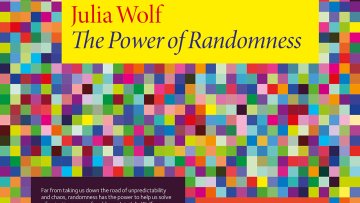Maths meets Zoology
Abstract
Aura Raulo (Ecological and Evolutionary Dynamics) and Marie-Claire Koschowitz (Vertebrate Palaeobiology) discuss their work and its mathematical challenges.
Aura Raulo
" Aura Raulo is a graduate student in Zoology Department working on transmission of symbiotic bacteria in the social networks of their animal hosts"
Title: Heaps in networks - How we share our microbiota through kisses
Abstract: Humans, like all vertebrates have a microbiome, a diverse community of symbiotic bacteria that live in and on us and are crucial for our functioning. These bacteria help us digest food, regulate our mood and function as a key part of our immune system. Intriguingly, while they are part of us, they are, unlike our other cells, in constant flux between us, challenging the traditional definition of a biological individual. Many of these bacteria need intimate social contact to be transmitted from human to human, making social network analysis tools handy in explaining their community dynamics.What then is a recipe for a ``good microbiome”? Theories and evidence implies that the most healthy and immunologically robust microbiome composition is both diverse, semi-stable and somewhat synchronized among closely interacting individuals, but little is known about what kind of transmission landscapes determine these bacterial cocktails. In my talk, I will present humanmicrobiome as a network trait: a metacommunity of cells shaped by an equilibrium of isolation and contact among their hosts. I propose that we do notnecessarily need to think of levels of life (e.g. cells, individuals, populations) as being neatly nested inside of each other. Rather, aggregations of cooperating cells (both bacteria and human cells) can be considered as mere tighter clusters in their interaction network, dynamically creating de novo defined units of life. I will present a few game theoretical evolutionary dilemmas following from this perspective and highlight outstanding questions in mapping how network position of the host translates into community composition of bacteria in flux.
Marie Koschowitz
“Marie Koschowitz is a PhD student in the Department of Zoology and the Department of Earth Sciences, working on comparative physiology and large scale evolutionary patterns in reptiles such as crocodiles, birds and dinosaurs."
Title: Putting the maths into dinosaurs – A zoologist's perspective
Abstract: Contemporary palaeontology is a subject area that often deals with sparse data.Therefore, palaeontologists became rather inventive in pursuit of getting the most out of what is available. If we find a dinosaur’s skull that shows prominent, but puzzling, bony ridges without any apparent function, how can we make meaningful interpretations of its purpose in the living animal that was? If we are confronted with a variety of partially preserved bones from animals looking anatomically similar, but not quite alike, how can we infer relationships in the absence of genetic data?Some methods that resolve these questions, such as finite element analysis, were borrowed from engineering. Others, like comparative phylogenetics or MCMC generalised mixed effects models, are even more directly based on mathematical computations. All of these approaches help us to calculate things like a raptors bite-force and understand the ins and outsof their skulls anatomy, or why pterosaurs and plesiosaurs aren’t exactly dinosaurs. This talk aims to presents a selection of current approaches to applied mathematics which have been inspired by interdisciplinary research – and to foster awareness of all the ways how mathematicians can get involved in “dinosaur research”, if they feel inclined to do so.


